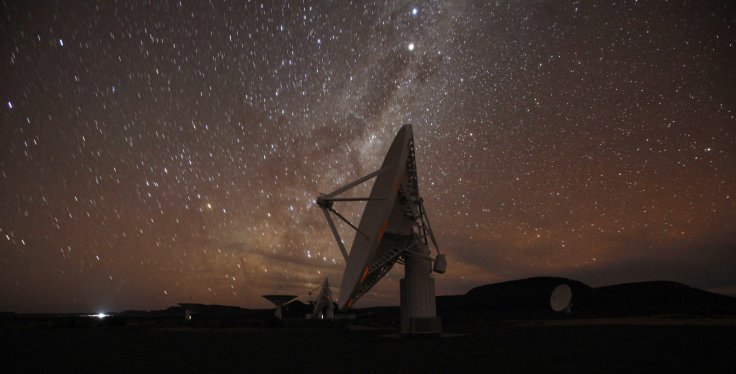
Scientists have taken another significant step towards the search for extraterrestrial life in the universe. A 64-dish MeerKAT radio telescope has been recently inaugurated at the South African town of Carnarvon to help solve some of the mysteries of the universe.
The radio telescope, built with 4.4 billion rands, the MeerKAT will soon be incorporated into the complex Square Kilometre Array (SKA) instrument. The telescope will be completely operational during the 2020s and once that's done, it will become the world's largest and most powerful radio telescope.
After MeerKAT is entirely set up, nearly 3,000 dishes located around Africa and Australia will be able to examine the sky successfully 10,000 times faster and it will obtain 50 times more sensitivity than the existing telescopes. It will also be able to generate space images, which will even overshadow the resolution quality of those coming from the Hubble Space Telescope, stated the SKA scientists.
"MeerKAT will address some of the key science questions in modern astrophysics – how did galaxies form, how are they evolving, how did we come to be here ... and for those purposes MeerKAT is the best in the world," Fernando Camilo said. Camilo is South African Radio Astronomy Observatory's chief scientist. The same organization that built and now will operate the telescope.
At the inauguration, Camilo also revealed some new images taken by MeerKAT. The pictures are of the region, which is about 25,000 light-years away, surrounding the supermassive black hole at the centre of the Milky Way galaxy.
"We didn't expect to use our telescope so early in the game, it's not even optimized, but to turn it to the centre of the galaxy and obtain these stunning images, the best in the world, tells you you've done something right, better than right," Camilo told Reuters.
Along with ground-breaking research in astronomy, MeerKAT also adds to the big data and high-performance computing field. IBM is developing the highly advanced systems that will be able to deal with the astronomical amount of data coming from the antennas to the supercomputers buried beneath the ground in order to avoid radio interference as much as possible.
"The first phase of SKA 1 in South Africa is to add 133 antennas to that (of MeerKAT)," Rob Adam, an SKA international board member, informed.









